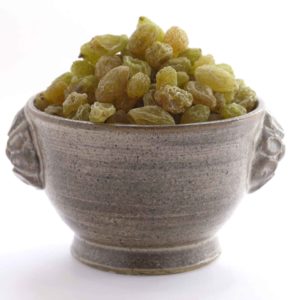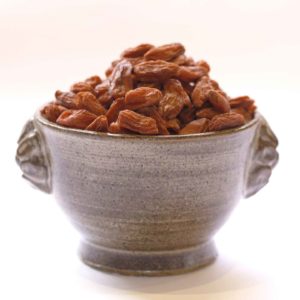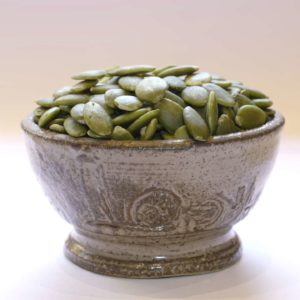0
- ONLINE GROCERY
- OUR HISTORY
- BLOG
- CONTACT
- MY ACCOUNT
- PRO
4,90 €35,90 € /kg
At breakfast or as an aperitif, organic Brazil nuts are a source of incredible benefits: lipids, magnesium, selenium, phosphorus, vitamins B6 and B9... the list goes on and on, and it's easy to see why everyone loves them.
Contrary to its name, the Brazil nut has no clearly defined geographical origin. Also known as the "Amazon nut", "Pará nut" or "Brazil chestnut", its origins lie in the subtropical regions of America (Amazonia). However, it wasn't until the 16th century that they were discovered by the conquistadors, and then only in the 17th and 18th centuries that they were exported to Europe and the USA respectively.
Its tree, the Amazon walnut ("Bertholletia excelsa" also known as "Brazil walnut" or "Brazil chestnut") can reach 40 metres in height, making it one of the tallest trees in the South American rainforest. Proportionate to its size, its leaves can reach 60 cm. Part of a complex ecosystem, the Brazilian walnut can only survive in the rainforest.
Real matriochkas protect the almond! Indeed, large, hard, brown shells (the size of coconuts) grow at the top of the tree. Once ripe, they fall to the ground and are harvested by hand by the Indians of the CANDELA PERU cooperative, whose mission is to organize, facilitate and manage innovative projects for the economic and social development of local rural families. These shells contain, nested one inside the other, some fifteen woody capsules which themselves (at last!) contain the almonds. Ivory-colored, covered with a thin brown skin, shelled Brazil nuts come from Peru and Bolivia. Its sweet, woody flavor will delight your aperitifs and culinary preparations.
Introduce nuts (plain, toasted or not, with no added salt or fat) into your diet on a regular basis: a small handful a day (around 15g), depending on the composition of your meals. This quantity is equivalent to about one tablespoon of oil (lipid content).
We recommend it...
- everyone (pregnant or breast-feeding women, athletes, mobile or sedentary workers, the elderly...): particularly rich in selenium, just 1 to 2 nuts a day are enough to cover the body's daily requirements(1). This rare antioxidant trace element is beneficial to the body (in small doses, as excess carries the risk of intoxication), as it acts against free radicals(2) and plays a key role in the functioning of the immune system and thyroid gland;
- anxious, depressed people: this refined nut is renowned for its high magnesium content, which eliminates fatigue, combats anxiety and emotional stress and stabilizes the mood;
- children, teenagers and students: for the phosphorus it contains, which acts on physical and intellectual effort (excellent memory stimulant);
- vegetarians, vegans/vegetarians: it is a source of protein, lipids (linoleic and oleic acid: omega-6 and omega-9), magnesium, phosphorus, potassium, calcium, zinc, manganese, copper(3), vitamins B6, B9 and E, as well as numerous amino acids (thiamine, riboflavin, niacin, pantothenic acid, etc.), helping to cover the body's needs.
(1) Duffield, A. & Thomson, C., A comparison of methods of assessment of dietary selenium intakes in Otago, British Journal of Nutrition 82(2):131-8, August 1999
(2) Thomson CD, Chisholm A, McLachlan SK, Campbell JM. Brazil nuts: an effective way to improve selenium status. Am J Clin Nutr. 2008 Feb;87(2):379-84.
(3) Souza, M. & Menezes, H., Processing of Brazil nut and meal and cassava flour: quality parameters, Ciência e Tecnologia de Alimentos,- Campinas, v. 24, n. 1, p. 120-128, 2004
Organic Brazil nuts are a delight to eat as a snack! As an aperitif, they can be eaten toasted or not, salted or plain, on their own or with otheringredients (almonds, pine nuts, walnuts, macadamias and/or dried fruit...) Whole or crushed, caramelized or as is, they can be incorporated into your salads (green, mixed or fresh fruit). Crushed, it can be incorporated into savory tarts, vegetable, cereal and legume stews, meat ragouts, etc. Puréed or ground, it can be transformed into vegetable cheese or pastry cream (replacing butter). It can be incorporated or sprinkled on your desserts: tarts, crumbles, brownies, cookies, ice creams and sorbets, vegetable milks, chocolate fondue...
Store in a cool, dry place, away from air and light.
| Weight | 50 g |
|---|---|
| Continent-Country | South America |
| Weight | 100g pouch, 250g pouch, 500g pouch, 750g pouch, 1000g pouch |



